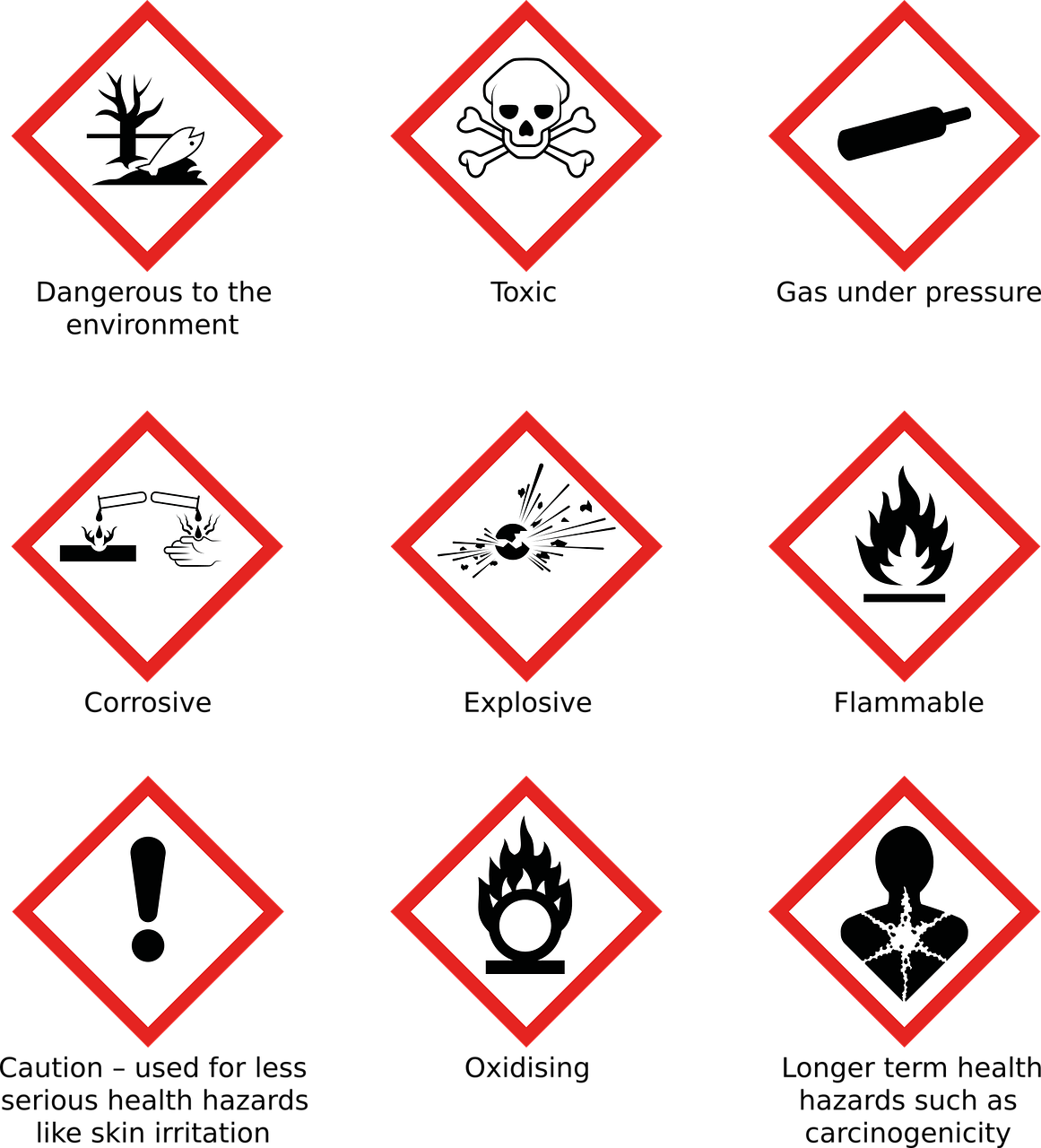Carbonic acid is a chemical compound that plays a crucial role in maintaining the pH balance in our bodies. But what exactly is carbonic acid, and is it something we need to be concerned about? In this blog post, we will delve into the world of carbonic acid and explore its effects on our health and the environment.
Carbonic acid, chemically represented as H2CO3, is formed by the dissolution of carbon dioxide (CO2) in water. It is a weak acid that can act as a buffer, helping to regulate the pH levels in our blood. But can this acid be dangerous to us? That’s the question we aim to answer.
Throughout this post, we will address common queries regarding carbonic acid, including its impact on our blood buffer, how it affects rocks, and how it can be removed from water. We will also discuss its breakdown process and its role as a buffer in our blood. So, let’s dive in and uncover the truth about carbonic acid!

Is Carbonic Acid Dangerous
Carbonic acid is often misunderstood and perceived as a dangerous substance, but let me clear the air (pun intended) on this topic. While carbonic acid does have its risks, it’s not as terrifying as it may sound. Let’s dive into the facts and debunk some myths!
Myth #1: Carbonic Acid Will Melt Your Skin
Contrary to popular belief, carbonic acid won’t dissolve your skin like a supervillain’s acid bath. Yes, it’s an acid, but it’s a weak acid that occurs naturally in our bodies and many everyday substances we consume. In fact, foods and beverages like sparkling water, soda, and even champagne contain carbonic acid. So, while it may tickle your taste buds, it won’t be melting them away anytime soon.
Myth #2: Carbonic Acid Will Turn You into a Fuming Volcano
You might have heard horror stories about carbonic acid causing violent reactions akin to a bubbling volcano. But fear not! Carbonic acid, when properly handled and stored, is relatively stable and doesn’t pose a significant threat. It’s primarily formed when carbon dioxide (CO2) dissolves in water, creating a mild acidic solution. So unless you’re planning to mix large quantities of CO2 and water in a makeshift laboratory, spontaneous eruptions are highly unlikely.
The Dos and Don’ts of Carbonic Acid
Now that we’ve debunked some misconceptions, let’s go over a few dos and don’ts when it comes to carbonic acid to ensure you stay on the safe side:
Do Enjoy Carbonated Beverages Responsibly
Carbonic acid provides those delightful bubbles that make your favorite carbonated beverages so refreshing. But like with anything, moderation is key. Enjoy your fizzy drinks, but be mindful of the sugar and overall acidity they may contain. Remember, balance is the secret to a happy and healthy relationship with carbonic acid.
Don’t Mix Carbonic Acid with Strong Acids
While carbonic acid itself is relatively harmless, mixing it with stronger acids can lead to a more volatile situation. Just like we don’t want to mix the wrong ingredients together in a recipe, it’s best to keep carbonic acid away from strong acids. After all, you don’t want to create a chemistry experiment gone wrong in your kitchen.
Do Ventilate Confined Spaces
In some industrial settings, carbonic acid can be found in confined spaces. If you’re working in such an environment, proper ventilation becomes crucial. With sufficient airflow, any potential build-up of carbonic acid’s byproduct, carbon dioxide, can be managed effectively. So open those windows, turn on those fans, and let the fresh air in!
Don’t Panic, Carbonic Acid Isn’t Out to Get You
While it’s essential to understand the potential risks associated with carbonic acid, it’s equally crucial to maintain a level-headed perspective. Remember, carbonic acid is a common component of many things we encounter daily, and we’ve been handling it just fine. So don’t let irrational fears take over; instead, knowledge is your best weapon against panic.
To sum it up, carbonic acid is not the villain it’s made out to be. Yes, it’s an acid, but a weak one that poses minimal harm when handled responsibly. So enjoy your favorite sparkling drinks and let carbonic acid add some bubbly excitement to your life without losing any sleep over it. Stay informed, stay rational, and embrace the fizzy goodness!

FAQ: Is carbonic acid dangerous
Can the buffer in blood be destroyed?
No, the buffer in blood is like a superhero that refuses to be defeated. It works tirelessly to maintain a stable pH, ensuring our bodies stay in tip-top shape. So, fear not! The buffer in blood cannot be easily destroyed.
What is the pH level of carbonic acid?
The pH level of carbonic acid can be a bit temperamental. It typically ranges from 3.8 to 4.2, which is slightly acidic. So, think of carbonic acid as that friend who can be a little sour at times.
What is the meaning of blood buffer?
Ah, the blood buffer, a hero in disguise! It’s a system in our blood that keeps the pH stable, preventing any catastrophes. Think of it as a mini bodyguard, shielding us from the dangers of extreme acidity or alkalinity.
Does diluting a buffer destroy it?
Diluting a buffer might weaken it a bit, like giving it a mini vacation. But fear not, it won’t completely destroy it. Buffers are quite resilient and can handle a little dilution without losing their superpowers.
How do you remove carbonic acid from water?
If you want to bid farewell to carbonic acid in water, simply let it bubble away like a fizzy friend. Yes, that’s right, just let it be and the carbonic acid will escape into the atmosphere, leaving you with pure, refreshing water.
What is carbonic acid and how does it affect Rock?
Carbonic acid, my dear reader, is quite the sculptor. It slowly works its magic on rocks, breaking them down over time. So, in a way, you could say carbonic acid is nature’s artist, shaping the earth’s landscapes one pebble at a time.
How are buffers destroyed?
Buffers, my friend, are not easily destroyed. They are like a fortress, standing strong against the forces of nature. However, extreme pH levels and overpowering acids or bases can slowly chip away at their defenses. So, be gentle with those buffers!
Which of the following actions will destroy the buffer?
Ah, the ultimate question! If you want to test the limits of a buffer, subject it to the wrath of extreme pH levels. Pouring strong acids or bases into it might be the fastest way to see the buffer crumble. But please, handle with care!
What is the effective pH range of a buffer relative to the pKa of the weak acid component?
The effective pH range of a buffer is like a dance party for acids and bases. It typically stretches about one unit on either side of the pKa of the weak acid component. So, get ready for a pH extravaganza!
Which pair of concentrations results in the most effective buffer?
Ah, the quest for the perfect buffer concentration! The trick, my friend, lies in balancing the concentration of the weak acid and its conjugate base. Aim for equal amounts, and you’ve unlocked the secret to the most effective buffer. It’s a delicate dance of harmony!
What does carbonic acid break down into?
When the time is right, carbonic acid will perform its disappearing act and break down into carbon dioxide and water. It’s like magic! So, carbonic acid can go from a sour friend to two bubbly companions in the blink of an eye.
How does carbonic acid act as a buffer in blood?
Ah, carbonic acid, the graceful buffer in our blood. It works hand in hand with bicarbonate ions, balancing the pH and keeping our blood in a happy, stable state. Think of them as the dynamic duo, ensuring our blood stays finely tuned like a well-choreographed dance.
Is carbonic acid dangerous?
Well, my dear reader, everything has its pros and cons, and carbonic acid is no exception. It can be a bit fussy, causing mild irritation and burning sensation if mishandled. However, in small quantities and under normal circumstances, it’s a manageable companion. So, treat it with respect and you’ll be just fine!
And there you have it, a comprehensive FAQ about the not-so-scary carbonic acid. Now, you’re armed with knowledge to impress your friends at your next chemistry gathering. Stay curious and keep those questions coming!
